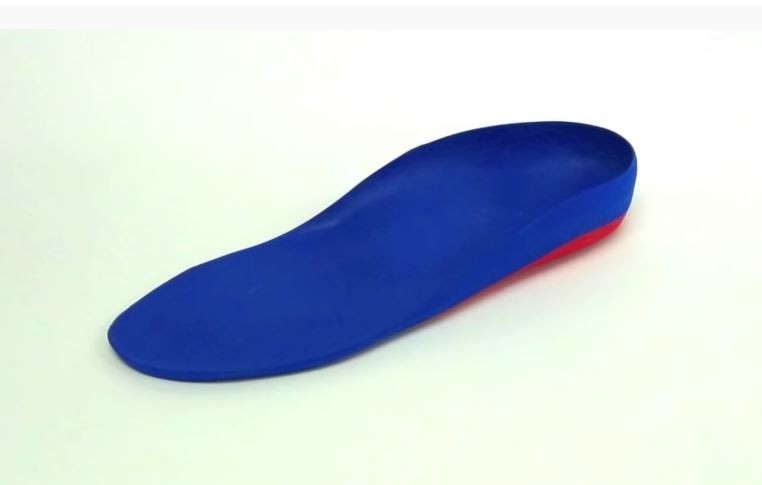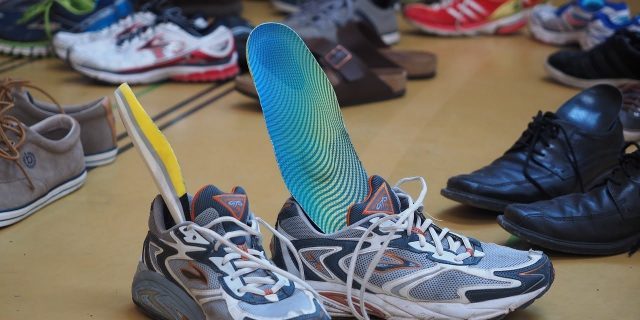Custom orthotics are shoe inserts specially designed for people experiencing severe foot problems. Their unique design is based on the result of the assessment of the patient’s gait, anatomy, and the type of pain being experienced.
Custom foot orthotics work by correcting the abnormal movement and position of foot and ankle joints. Furthermore, they help prevent foot problems from affecting the rest of the person’s body.
Most people with foot and ankle problems will benefit from custom orthotics.
So, what type of orthotics will work best for you?
And…
How do you know if you need custom orthotics?

Image by Hans Braxmeier from Pixabay
Custom orthotics are effective for people suffering from the common health conditions such as:
- People with diabetes often experience a loss of feeling in their feet due to poor circulation.
- Arthritis can cause severe deformities in the foot and usually affects the joints.
- Metatarsalgia is a painful foot ailment that affects our foot’s bones, joints and ball.
- Plantar fasciitis is a painful inflammation that affects the sole. Many people who have this foot problem experience pain first thing in the morning.
- Achilles tendinitis
- Shin splints
- Bunions and
- Knee pain
The 3 Types of Orthotics
According to the Harvard Medical School website, there are currently 3 types of foot orthotics and they are the:
- Shop front-generated
- Over the counter (OTC) or Off-the-shelf and
- Professional custom orthotics
Shop front-generated orthotics
These orthotic devices are ready to wear shoe inserts recommended to you based on a non-health practitioner’s recommendation.
Over the counter (OTC) orthotics
Also known as off-the-shelf shoe inserts, these are widely available and ready to wear orthotics recommended to you based on the size of your foot.
Take note that both Shop-front generated and OTC orthotics might need replacement more often as the materials used are prone to wear and tear. Also, because they are not custom made or prescribed by a podiatrist who has diagnosed a condition they cannot work as well as custom or prescription orthotics.
Professional custom orthotics
Acquiring a professional custom orthotic involves an appointment with a podiatrist or podiatric surgeon. who will perform a thorough assessment of your medical history.
Moreover, the assessment includes checking your activity levels, the location frequency and type of pain you may have and then a comprehensive examination of your foot and leg movement and function standing and walking.
After the diagnosis, the podiatrist will prescribe an orthotic specifically for you and your foot problem. Your prescription will involve selecting the correction of a number of different parts of the foot.
The most accurate way to record the exact shape, size and alignment of your foot is by using a laser scanner.
The 2 types of Custom Foot Orthotics
Custom orthotics are primarily the Functional and the Accommodative type.
Functional Orthotics correct the loading patterns of your foot and thus improve efficiency, help reduce pain and also reduce the risk of reinjury.
- For heel pain, an orthotic can be designed to regulate the load on the plantar fascia.
- For arthritis, an orthotic can be designed to minimise pressure within the joints.
Accommodative Orthotics prevent any form of pressure from causing bruises on the skin’s surface. This is quite helpful for diabetic patients.
Which type of orthotic is right for you?
Over the counter and kiosk orthotics
OTC shoe inserts and Shop-front orthotics can work well for people who:
- are of average height, weight, foot type
- suffer from general problems such as heel pain
Related read: Orthotics Making Your Foot Pain Worse?
Custom foot orthotics
People with specific needs or suffering from critical conditions such as diabetes and severe flat feet will need custom orthotics and since they will be under the care of podiatrists.
Some clinics that specialise in foot and ankle care usually include custom orthotics as part of a treatment plan.
In a treatment plan, the podiatrist prepares a written document that will describe how they and the patient will work together towards achieving a goal. In this case, the goal is to get the patient back on their feet to enjoy a pain-free, active lifestyle.
Should you wear orthotics all the time?
When and how long should you wear your orthotics will depend on your podiatrist’s advice. But in general, you are allowed to wear your custom shoe inserts whenever you wear your shoes for walking, running or when you leave your house.

The Takeaway on Custom Orthotics
Even if you don’t experience foot pain, instabilities and imbalances of your feet’s muscles, tendons, ligaments and bones can contribute to other aches and pains of your knees, hips and back.
Remember, your feet carry your body’s weight and how your body feels can affect the way you stand, walk and run.
Custom orthotics can treat any misalignment of your foot and ankle and thus help prevent ache and pain in other areas of your body.
Experiencing hip and back pain? Alignment problems in your feet could be the culprit. Set an appointment with Adelaide Foot and Ankle today so we can check for potential foot problems you might have overlooked.





